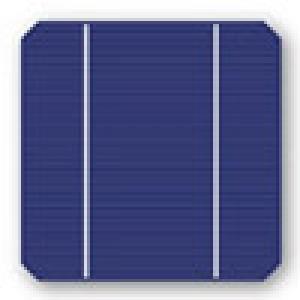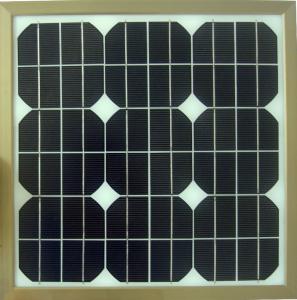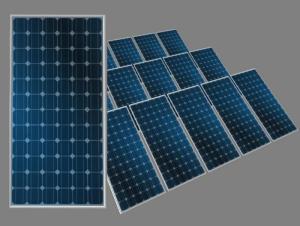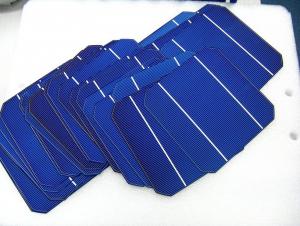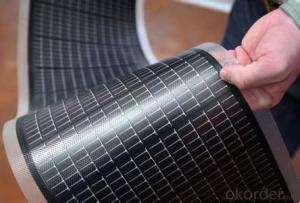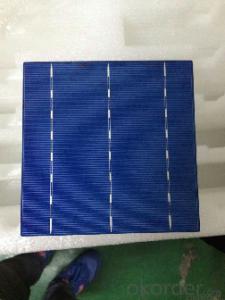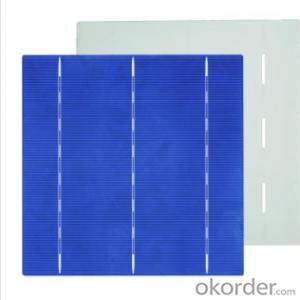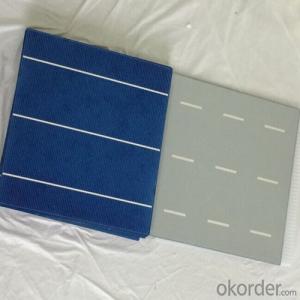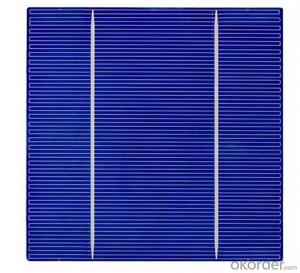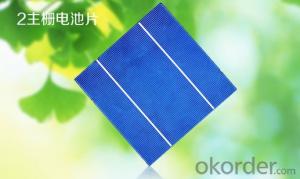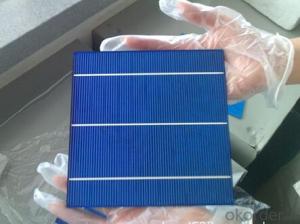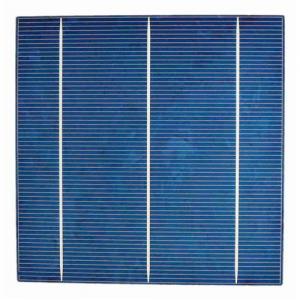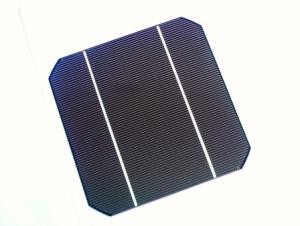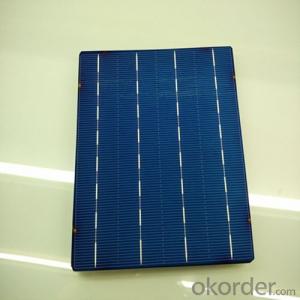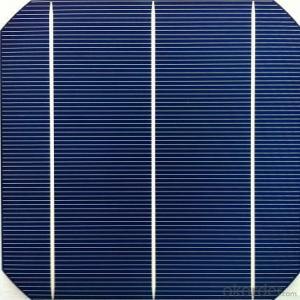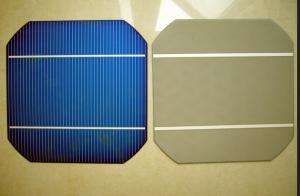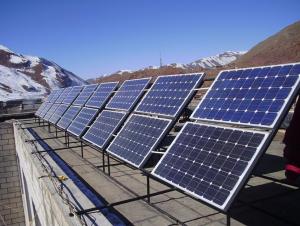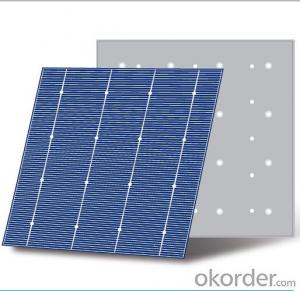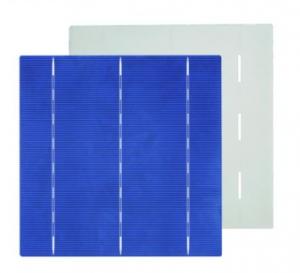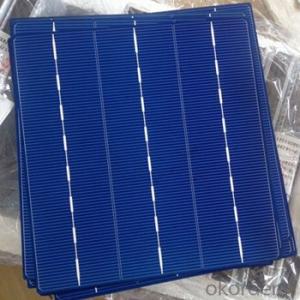Polysilicon Solar Cells PV Mono 2BB Cells
- Loading Port:
- China Main Port
- Payment Terms:
- TT OR LC
- Min Order Qty:
- -
- Supply Capability:
- -
OKorder Service Pledge
OKorder Financial Service
You Might Also Like
We supply regular mono 125x125mm and poly 156x156mm solar cells.
Cells made in China mainland and Taiwan are both available.
Cell production capacity yearly reach 1GW.
Our cells pattern include continuous and uncontinuous busbar to meet different cells line.
our cells special features:
1. High conversion efficiencies resulting in superior power output performance
2.Outstanding power output even in low light or high temperature conditions
3.Optimized design for ease of soldering and lamination
4.Long-term stability,reliability and performance
5.For 156P poly cells with high efficiency in photovoltaic conversion 16.3%-17.5%.
6.Low inverse current, high shunt resistance and high dependability.
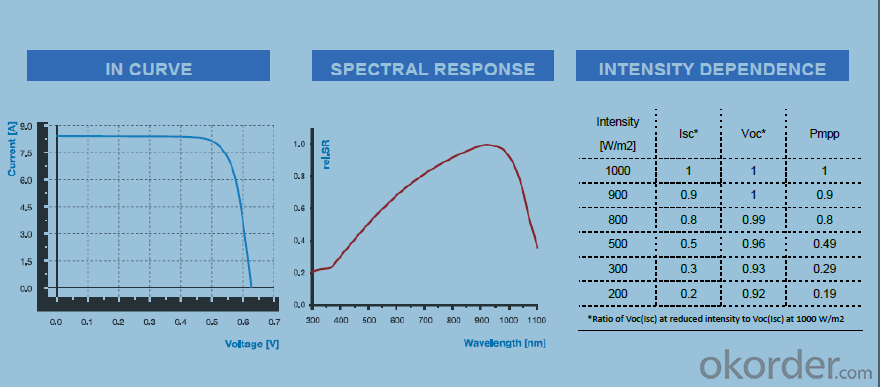
- Q: How do solar cells generate electricity?
- Solar cells generate electricity through the photovoltaic effect, where the cells convert sunlight directly into electrical energy. The cells are made of semiconducting materials, usually silicon, which absorb photons from the sunlight. These photons excite the electrons in the material, causing them to break free from their atoms and create an electric current. This current is then collected and used to power various devices or stored in batteries for later use.
- Q: Can solar cells be used in remote areas with no grid access?
- Yes, solar cells can be used in remote areas with no grid access. Solar cells, also known as photovoltaic (PV) cells, convert sunlight into electricity. They can be installed in off-grid locations where there is no access to a power grid, allowing the generation of electricity for various purposes. Solar cells are particularly beneficial in remote areas as they offer a sustainable and reliable source of clean energy, reducing the dependence on traditional fossil fuels and enhancing energy independence.
- Q: Can solar cells be used for powering manufacturing facilities?
- Yes, solar cells can be used to power manufacturing facilities. Solar energy can be harnessed through the use of photovoltaic panels, which convert sunlight into electricity. This renewable source of energy can be utilized to meet the power demands of manufacturing facilities, reducing their reliance on traditional grid electricity and helping to reduce carbon emissions.
- Q: What is the difference between a monocrystalline and polycrystalline solar cell?
- The main difference between a monocrystalline and polycrystalline solar cell lies in the structure of the silicon material used. Monocrystalline solar cells are made from a single crystal structure, resulting in a uniform and consistent appearance with a high level of efficiency. On the other hand, polycrystalline solar cells are made from multiple crystal structures, giving them a fragmented and non-uniform appearance with a slightly lower efficiency. Overall, monocrystalline cells tend to be more expensive but offer higher efficiency, while polycrystalline cells are more affordable but slightly less efficient.
- Q: Can solar cells be used in military applications?
- Yes, solar cells can be used in military applications. They have various applications in the military, including powering remote surveillance systems, communication equipment, and providing electricity to field operations in remote areas. Solar cells offer a reliable and sustainable source of energy, reducing the reliance on traditional fuel sources and enhancing the operational efficiency of military units. Additionally, solar technology can be integrated into portable and lightweight systems, improving mobility and reducing the logistical burden for military personnel.
- Q: What is the role of solar cells in solar-powered water heaters?
- The role of solar cells in solar-powered water heaters is to capture sunlight and convert it into electricity. This electricity is then used to power the heating element or pump in the water heater, allowing it to heat water using clean and renewable energy from the sun.
- Q: Can solar cells be used in public transportation systems?
- Yes, solar cells can be used in public transportation systems. They can be integrated into various components such as the roof or windows of buses, trains, or trams to harness solar energy and power the vehicle's electrical systems, reducing reliance on fossil fuels and lowering carbon emissions. This technology is already being implemented in some cities around the world, offering a more sustainable and environmentally friendly alternative for public transportation.
- Q: Where can I buy solar cells?
- Why do you want to buy solar cells?
- Q: Can solar cells be used in residential applications?
- Yes, solar cells can be used in residential applications. In fact, they are increasingly being utilized in homes as a renewable and sustainable source of energy. Solar panels can be installed on rooftops or in yards to convert sunlight into electricity, reducing dependency on traditional power grids and lowering energy costs for homeowners.
- Q: Can solar cells be used in powering remote weather stations?
- Yes, solar cells can be used to power remote weather stations. Solar cells are a sustainable and efficient way to generate electricity, making them ideal for remote locations where access to grid power is limited. They can provide a reliable source of power for weather stations, allowing them to operate continuously and gather data even in remote areas.
Send your message to us
Polysilicon Solar Cells PV Mono 2BB Cells
- Loading Port:
- China Main Port
- Payment Terms:
- TT OR LC
- Min Order Qty:
- -
- Supply Capability:
- -
OKorder Service Pledge
OKorder Financial Service
Similar products
Hot products
Hot Searches
Related keywords
